The Battle of Chevilly was fought during the siege of Paris. The battle was the second French sortie from Paris against the German armies. On 30 September 1870 General Joseph Vinoy attacked the Prussian VI Corps at Chevilly and was easily repulsed.
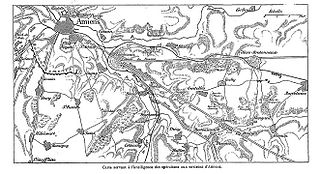
The Battle of Amiens, also known as the Battle of Villers-Bretonneux, was fought on 27 November 1870 between French and Prussian forces during the Franco-Prussian War (1870–1871). It ended in a Prussian victory, forcing the French to retreat and allowing the Prussians to capture Amiens, France.
The Battle of Châtillon, also known as the Battle of Châtillon-sous-Bagneux, was a skirmish in the Siege of Paris between France and North German Confederation in the Franco-Prussian War, took place on 13 October 1870. This is also considered the first battle in the history of the French Third Republic. In this fierce battle – occurred at Châtillon and Sceaux, Corps V of the Prussian army under the command of Lieutenant General Infantry Hugo von Kirchbach, along with the II Corps of the Kingdom of Bavaria by the Supreme Minister infantry Jakob von Hartmann which were the forces of the army Group 3 of Prussia by Prince Friedrich Wilhelm as General command., won a victory against an attack by the XIV Corps under General Renault - of the French army under General Auguste-Alexandre Ducrot. Although some soldiers under Ducrot fought well, the majority of his army became agitated. The French were forced to flee to Paris, losing the Châtillon Plateau - a very favorable defensive position overlooking the fortresses south of Paris - to the Germans. This was a disaster for the "justice" of the French army during the war, although the French reported that they suffered only minor losses.

The siege of Phalsbourg was an early battle of the Franco-Prussian War that was fought between the French Empire against Germany at Phalsbourg near the Vosges beginning on 10 August 1870, and ending on 12 December of the same year.
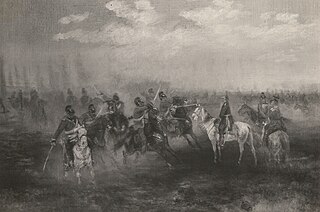
Battle of Buzancy was a battle of the Franco-Prussian War which took place on 27 August 1870 in Buzancy, France between the French Empire and the combined German forces of Prussia and Saxony. The midfield force of the 24th Brigade of a division Saxon cavalry of the Maas Army of the Prussian army won a victory over the Cavalry Regiment. 12th Chasseur light infantry of the V Army of the French Empire under the command of General Pierre Louis Charles de Failly. Taken by surprise in this cavalry battle, the French formation was torn apart and almost completely annihilated. On the Prussian - German side, the captains of the two cavalry squadrons involved in the battle were wounded. The defeat at Buzancy forced the retreat of the French cavalry squadrons, and the Battle of Buzancy is arguably the most characteristic cavalry and artillery clash of the war.
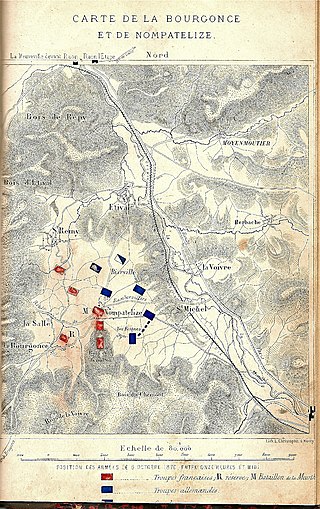
The Battle of Nompatelize, also known as the Battle of Etival, was a battle of the Franco-Prussian War on 6 October 1870, between Etival and Nompatelize in the province of Vosges from Strasbourg 64 km southwest. This battle marked the first major crackdown of franc-tireur operations in the Vosges region by the XIV Corps of the Prussians by Minister August von Werder in early October 1870. In matches fiercely this, A force of the Army of Rhône of the French Republic under the command of General Louis-François Dupré, who predominated to markedly document in terms of troop numbers, and attacked 6 infantry battalions of the Grand Duchy of Baden under the command of General Alfred von Degenfeld which were part of the XIV Corps, but were defeated. Compared to the casualties of the German military, the losses of the French side in this battle were much greater. After seven hours of fighting, the French were forced to flee in turmoil to Bruyeres and the Rambervillers. The Battle of Etival contributed to General Werder wiping out the French from Alsace.
The siege of Verdun was a battle fought in France during the Franco-Prussian War from 13 October until 8 November 1870.
The siege of Sélestat was a siege, extending from 20 to 24 October 1870, of the French Alsatian fortress of Sélestat, during the Franco-Prussian War. After artillery bombardment by the Germans, the siege ended when the French army surrendered, mainly because the French garrison was demoralized. The Germans suffered only minor losses, while this victory brought them many spoils.

The Battle of Châteaudun took place in northwestern France during the Franco-Prussian War, which took place on October 18, 1870. In this battle, the Imperial German Army led by General Friedrich Wilhelm Ludwig von Wittich attacked the city of Châteaudun and captured the city. During the nine-hour battle the attackers defeated forces that included Francs-tireurs led by Ernest de Lipowski who was of Polish origin. Although it ended in defeat, the resistance of the French army at Châteaudun is recorded by one document as legendary. The fighting at Châteaudun was immortalized by a painting by Philippoteaux.
The Battle of Chateauneuf-en-Thimerais was a battle of the Franco-Prussian War, which took place on November 18, 1870, in the commune of Châteauneuf-en-Thymerais in France. This was one of a series of victories by a division of the Prussian army along the Loire under the command of Frederick Francis II, Grand Duke of Mecklenburg-Schwerin before the Garde Mobile's forces fledgling by commander Minister Fiereck, within a week after the Imperial German Army was defeated at the Battle of Coulmiers. During the Battle of Châteauneuf-en-Thimerais, the 22nd Division of the Kingdom of Prussia – noted as a brave division – was under the command of General Friedrich Wilhelm Ludwig von Wittich who captured the commune, taking in his hands hundreds of French prisoners of war. The failure at this battle forced the French forces to retreat westward.
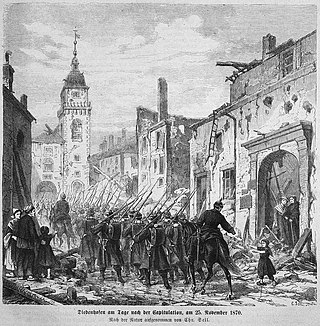
The siege of Thionville was a battle of the Franco-Prussian War which occurred in Thionville of the Moselle from November 13 to November 24, 1870. The small French garrison repulsed an attempted attack on August 14. It was subjected to a blockade and then besieged from November 13. After the capitulation of Metz, on October 28, 1870, the Prussians move part of their powerful artillery to Thionville. Bombed from November 22, the square surrendered on November 24. The capture of Thionville and that of Montmédy a month later gave the Germans control of the railroad to the Picardy front.

The Battle of Artenay' also known as the Battle of Arthenay, took place during the Franco-Prussian War, on October 10, 1870, in Artenay a small town located on the road from Orléans to Paris, France which was about 10 miles north of the city of Orléans. In this fierce battle, with superior strength compared to the opponent, The I Corps of the Kingdom of Bavaria, under the command of Lieutenant General Ludwig von der Tann-Rathsamhausen, in collaboration with the 22nd Division of the XI Corps of the Kingdom of Prussia and the two cavalry divisions of the Prussian army attacked and penetrated the defense system of the army of the Loire of the young French Republic, under the control of general Joseph Edouard de la Motterouge, causing heavy losses for the French military of which many people were taken prisoner. The winning conditions Artenay were favorable enough for Von der Tann to strike Orléans, while the forces of France knocked back on Orléans forest in an agitated state. Despite this, Nièvre's Garde Mobiles and the Pontifical Legion in the French army were noted for their strong resistance, while a monk in Prussian Cavalry under the command of Prince Albrecht demonstrated his prowess in the battle at Artenay.
The siege of Mézières was a siege battle during the Franco-Prussian War, it took place from November 17, 1870 until January 2, 1871, in Mézières-en-Gâtinais which is located on the banks right of the river Meuse in France. After suffering from a German artillery strike, the French army at Mézières under the command of Colonel Vernet, surrendered to Germany under the command of Major General Wilhelm von Woyna on January 2, 1871. Although lasting just over a day, German artillery bombardment caused French defenders and civilians in Mézières heavy losses. With the victory, the Germans captured many French officers and soldiers, with many cannons and supplies from the enemy's reserves. Not only that, the victory at the Siege of Mézières made the German army have complete dominance of the railway line in the north extending from Metz and Mézières to Paris, capital of France.
The Battle of Châteauneuf was a battle in the Franco-Prussian War that took place on December 3, 1870, at the Châteauneuf-sur-Loire, Loire, France. During this engagement, the 3rd Infantry Brigade of the Prussian army, which was a part of the Baden Division and was under the command of General Keller repelled an ambush of the French army under the command of General Camille Crémer. The battle facilitated the Prussian army to continue its withdrawal from Autun. The battle lasted for seven hours, and brought the Prussian army negligible losses, with 153 casualties. However, the Germans viewed this engagement as one of their most glorious victories of the campaign.
The Battle of Buchy was fought during the Franco-Prussian War, on 4 December 1870, at Buchy, Seine-Maritime, France. During the battle, the VIII Corps of the Prussian Army, under the command of General of the Infantry August Karl von Goeben, suddenly attacked and defeated a French force under the command of General de Brigade Guillaume Briand. The French suffered heavy losses. After their victory at Buchy, German troops captured Rouen.
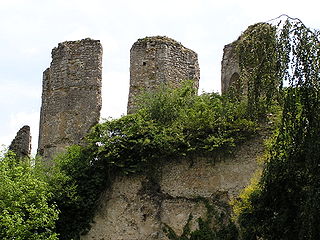
The Battle of Vendôme took place during the Franco-Prussian War, it lasted from December 14–17, 1870 in Vendôme, Loir-et-Cher, France. In this fierce fighting, the X Army of the Kingdom of Prussia under the command of General Konstantin Bernhard von Voigts-Rhetz and the 2nd Army of Prussia which was commanded by Prince Friedrich Karl, attacked the French Army of the Loire by Minister Antoine Chanzy and Admiral Bernard Jaureguiberry who was a former navy officer of France. The Prussians defeated the French in a gun battle on December 16 and finally won the battle. With this victory, the Germans attacked the enemy's right flank and forced the French forces to withdraw from their stronger defensive position at Fréteval, where they engaged another Prussian army indecisively. The victory at Vendôme also brought the Prussian armies some French prisoners and weapons, while the disadvantage of Chanzy's army forced him to hastily withdraw to Le Mans.
The Battle of Monnaie, also known as the Battle of Tours was a battle of the Franco-Prussian War. It took place on the December 20, 1870 at Indre-et-Loire, France. During this engagement, a Hanover division of the Imperial German Army under the command of General Schwarzkoppen, belonging to Legion X under the command of Konstantin Bernhard von Voigts-Rhetz attacked and won the victory against an army of Garde Mobile's 234 led by General Ferry Pisani, driving the French to Langreais. This victory allowed the Germans to enter and occupy the city of Tours.

The siege of Peronne was a battle during the Franco-Prussian War, from December 26, 1870 until January 9, 1871, in Péronne, Somme of France. The German siege force, under the command of Lieutenant Generals August von Goeben and Albert von Barnekow, forced the French army at Péronne- which could not be rescued and had to surrender after more than a week under the bombardment of the Prussian army. With the victory, the armies of Albert von Barnekow captured a defending force of thousands of French soldiers in Peronne, and obtained a large number of cannons and war materials to the Prussians hands. In general, the advantage of the artillery of the Prussians as well as the dynamism of German officers is credited with leading to German victories in the sieges of French fortresses, and the success at the Siege of Péronne solidified German control over the river Somme.

The siege of Rocroi was a battle of the Franco-Prussian War, it was held in January 4 to the 6th, 1871 at Rocroi which was a bastion of France located to the west of Sedan. After an artillery fire by the Prussian army, the officer commanding the French troops at Rocroi was forced to surrender the Division Militia under General Schuler and Sendan and Wilhelm von Woyna. With the success of the Siege of Rocroi, the military spectrum was obtained on their hands were hundreds of prisoners along with many stocks, costumes and contemporary heavyweight artillery of the French. During this siege, the town of Rocroi was heavily destroyed. The fall of Rocroi marked one of the German army's consecutive victories in the war.

The Battle of Pontarlier, also known as the Battle of Pontarlier-La Cluse, was the final military operation of the Franco-Prussian War, that took place from January 29 to February 2, 1871, near Pontarlier and La Cluse-et-Mijoux, not long after the newly formed German Empire and French Republic had a ceasefire. During these engagements, the German Army of the South, under the command of Lieutenant General Edwin von Manteuffel won over the French Eastern Army under the command of General Justin Clinchant, the battle forced the French Eastern Army to withdraw to neutral Switzerland. The strong efforts of the German armies led by General August von Werder in The previous Battle of the Lisaine, as well as that of General Von Manteuffel's armies at the Battle of Pontarlier, resulted in the collapse of the assault on southern Germany which the Eastern Army had expected to be ruined. At the same time, the defeat of the Eastern Army finally forced the French Interior Minister Léon Gambetta to end resistance to the Germans. The defeat at Pontarlier also brought the French heavy losses, including a large number of soldiers being taken prisoner.










